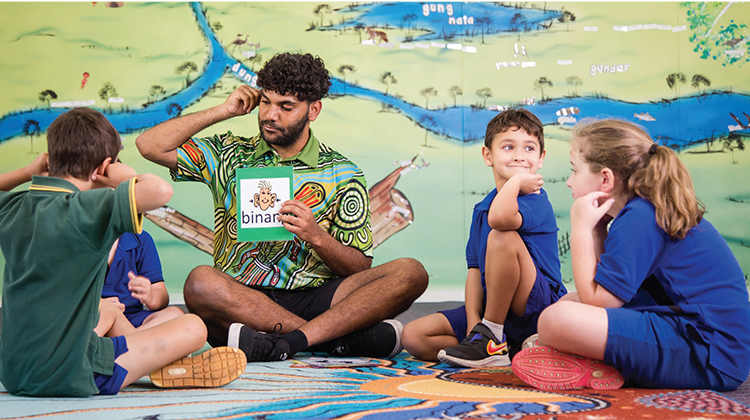Effective Programs Are School Made

When schools are supported to apply their own insights and create programs to solve issues they are facing, good things start to happen.
Take Toogoolawa School in Queensland, a special assistance school for boys with additional needs. Some 20% of students were reading at or below Year 2 level while half are of high-school age.
The school created a simple, phonics-based literacy program and one-to-one teaching to improve reading. Student progress was monitored daily to ensure they stayed on track and the smallest successes were celebrated.
The initiative had an enormous impact academically, and on the boys’ emotional, social and behavioural development. In the last 12 months of the project, students averaged 3 years of reading progress.
For many students, this was their first ever experience of success in the classroom and with confidence and self-esteem boosted, the boys became more comfortable in a learning environment and the number of behavioural incidents dropped significantly. The project is now broadening to include aspects of writing and spelling.
Absenteeism at Lawnton State School was far too common and complex trauma, behavioural issues and developmental delays were found to be the cause for students Max and Grace. The children resisted positive bedtime routines, slept in and refused to get ready for school.
Their mum Libby, while committed to her children’s education, was experiencing considerable stress as she navigated her own set of problems with little additional support.
Nikki Brown and her team of Student Engagement Officers went to work to change Libby and her kids’ situation along with that of dozens of other families at the school. Libby was offered counselling, connected with support services and provided with uniforms, shoes and food parcels donated by the local community.
For Libby’s family, Nikki developed a multipronged approach to get Max and Grace back to school more regularly. She would assist at home as they got ready in the morning and supplied interactive “Get-Ready” charts that encouraged positive routines at bedtime and before school.
Together with the school chaplain, guidance officers and teachers, the school strengthened relationships with the children and increased their desire to come to school with attendance rewards.
After huge success as Engagement Officer at Lawnton State School in 2018 and 2019, Nikki’s work expanded to help Engagement Officers at four neighbouring primary schools, offering mentoring, advice and support as they worked between schools and families to tackle early years absenteeism. In most cases, poor attendance indicated underlying struggles within families, as they dealt with issues like mental health, homelessness and generational trauma.
These are just two of the wins that schools accessing the Schools Plus funding program have enjoyed this year. School led initiatives have seen a range of positive impacts, including improved numeracy, STEM and languages boosts, and authentic parent/family engagement in education.
Karen Robertson, Director of Education at Australian Schools Plus says, “Success of these projects is driven by educators knowing their schools, students and contexts. Being given the opportunity to be creative and the flexibility over time to pivot and change their strategies along the way allows the project to be responsive to the needs of the students.
“The Schools Plus model provides wrap around support: funding, coaching, project management and evaluation. These elements work together to ensure the schools are well placed for success. The support of the coach plays an important role as a critical friend and mentor as well as building the capacity and capabilities of the project team to effectively design, implement, and evaluate the work so that it is sustainable.
“Each school faced challenges that they were able to identify as a priority to address to improve student outcomes. Although the challenges varied project to project, the key goal for all was to build the capacity of the school leadership, provide teaching and learning opportunities to improve and implement effective practice and most importantly improve student learning outcomes.”
By allowing schools to access their own insight and act on the specific set of issues facing each, effective programs have emerged and many have gone on to be applied to other schools facing similar situations.
“Systems often follow a one size fit all approach, informed and leading from the middle. What we know is that for schools facing disadvantage; socio-economic, geographic, first nations, disability etc this approach often hinders effective student outcomes. Studies have been conducted at a number of levels and each conclude that in fact there is a need for schools and school principals to have greater autonomy, authority and responsibility for ensuring positive educational outcomes for their students.
“These educators understand the context and challenges and are often go far beyond what the system requires in order to support the needs of their students. The partnership that Schools Plus provides enables schools to lead initiatives with the support that they know their students and school communities best. This public private partnership provides the opportunity to implement initiatives specifically to address these needs without being bound by the constraints of the system,” Robertson says.